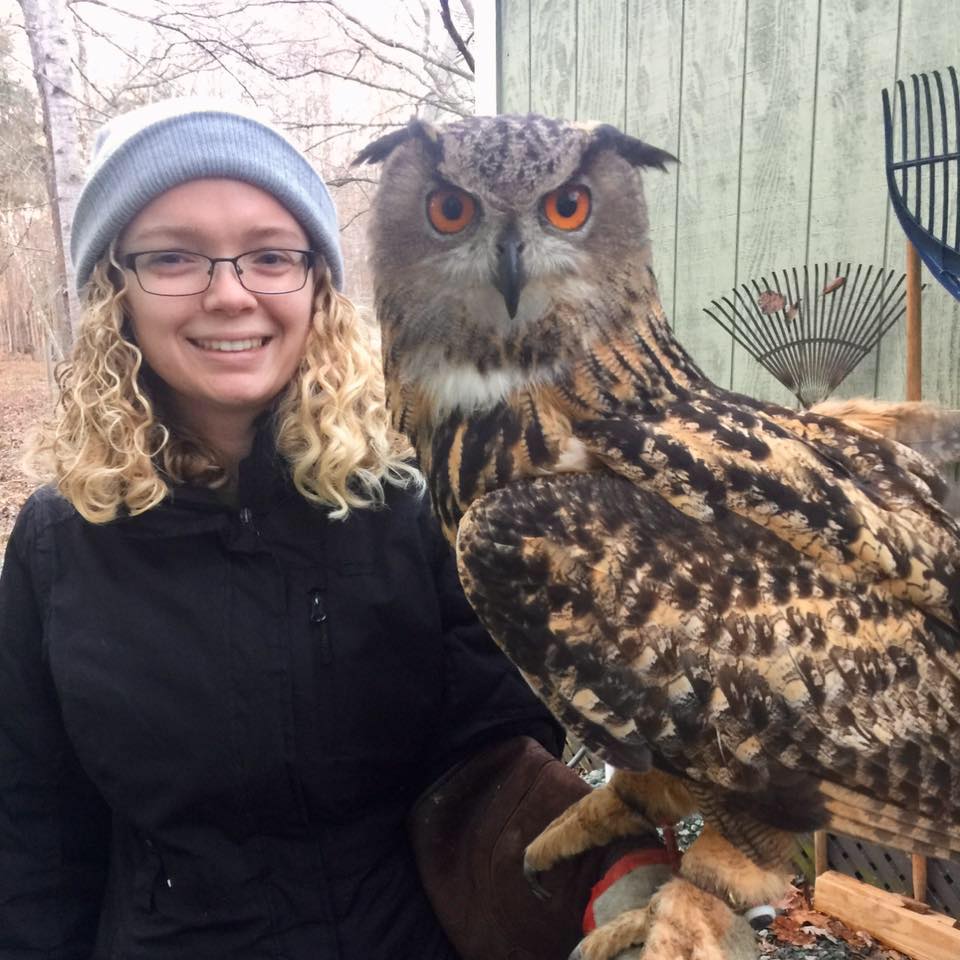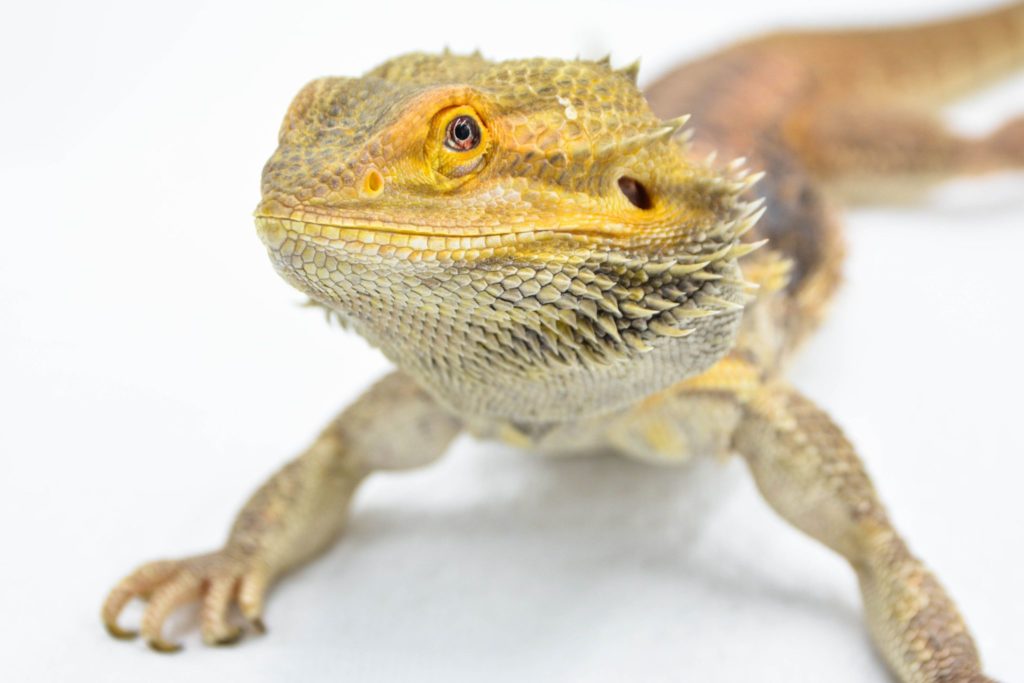
Transporting Your Pet Reptile
Are you adopting an animal or bringing one to visit the veterinarian? Transport is often necessary when owning any animal, so develop a good transport plan to ensure that your animal is safe and secure for the journey.
We always recommend having an appropriate container ready for transport, your reptile should not be transported free-roaming or on a leash. This is for their own safety in the car and potentially at the veterinarian’s office. Animals can and will get loose in the car and disappear behind dashboards and under the seats. This is not a safe situation and can result in injury or dangerous driving. We recommend that your reptile is contained when waiting at the veterinarian, as other animals in the lobby can endanger your pet.
Temperature Control
Heat Packs: Reptiles are usually not comfortable below a 60-70°F ambient, so consider using a hot pack to provide extra heat during the transport. For a short trip, Hot Hands are effective and usually last up to 8 hours. For a longer trip, the Uniheat packs last up to 72 hours and provide consistent warmth. The reptile should never be allowed to come into contact with the heat pack. We recommend wrapping the heat pack in a washcloth and taping this to the outside of the container on the side or bottom. Always make sure there is a space in your container where the reptile can get away from the extra heat if necessary.
Cool Packs: These shouldn’t be necessary in most situations, as many reptiles have basking spots of 90-100°F so a short exposure to hot temperatures while being transported to a vehicle is not harmful. However, if your car’s AC is out or if you are transporting an amphibian or cold-tolerant reptile species, you can use a Cryopak Phase 22 to keep your animal cooler. This should also be wrapped in a towel outside of the transport container.
Insulation: If you are transporting in extremely cold temperatures, insulating your transport container with Styrofoam sheets will help to maintain temperature. You can also place your transport container inside of a large cooler or Styrofoam box, also with holes drilled in it, to keep the temperature more stable.
Covers: If you are using a container with large ventilation ports such as a cat carrier or Kritter Keeper, this can also be wrapped in a towel or kept inside a cardboard box to prevent cold wind from hitting the animal directly.
Species-Specific Guidelines
 Snakes: Snakes are escape artists, and should have secondary containment if possible and especially for smaller individuals. This means using a pillowcase or cloth bag and keeping the bag inside of a latching plastic bin. If the snake manages to escape the pillowcase, it is still enclosed within the bin. The pillowcase is a recommended transport method as it blocks out visual stimuli and can help them feel safe and secure in transport. In both captivity and the wild, snakes exhibit “positive thigmotaxis” by seeking out tight-fitting hiding areas. A pillowcase can help replicate this in transport. Of course, a pillowcase alone won’t protect the snake from external dangers such as crushing or being stepped on, so place the pillowcase inside of a plastic bin with locking handles for extra security. You can line the bin with a small towel for extra traction. Make sure to drill or melt holes in the bin for proper ventilation.
Snakes: Snakes are escape artists, and should have secondary containment if possible and especially for smaller individuals. This means using a pillowcase or cloth bag and keeping the bag inside of a latching plastic bin. If the snake manages to escape the pillowcase, it is still enclosed within the bin. The pillowcase is a recommended transport method as it blocks out visual stimuli and can help them feel safe and secure in transport. In both captivity and the wild, snakes exhibit “positive thigmotaxis” by seeking out tight-fitting hiding areas. A pillowcase can help replicate this in transport. Of course, a pillowcase alone won’t protect the snake from external dangers such as crushing or being stepped on, so place the pillowcase inside of a plastic bin with locking handles for extra security. You can line the bin with a small towel for extra traction. Make sure to drill or melt holes in the bin for proper ventilation.
For giant snakes, a cloth bag is often unnecessary and inefficient due to the size of the animal. We recommend transporting giant snakes inside of larger, solid-colored plastic latching containers. A solid-colored container will provide the same secure feeling as it blocks out light and external stimuli. The Hefty brand makes large plastic storage bins that are effective for stronger snakes.
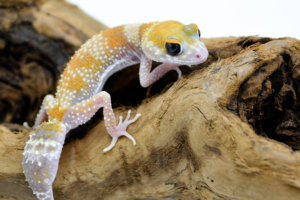 Geckos: Geckos are usually smaller and can be more nervous with transport than other lizards. For this reason, we recommend transporting in a smaller and very secure enclosure, as well as providing some decor or a lightweight hide within the enclosure. A hide made out of plastic or cardboard is preferred, as a heavy hide can tumble around during transport and crush your reptile. Other lightweight decor ideas include fake plants, which are especially effective with arboreal geckos such as crested, mourning, and tokay geckos. Our favorite container type with geckos is the Kritter Keeper or other similar brands. They offer a variety of sizes, have secure lids, and good ventilation. Additionally, these lids can come off completely and have a smaller latching window. This is useful for geckos as geckos will climb to immediately try to escape the container, so putting them in through the “window” latch will prevent them from climbing up and out or getting their toes pinched by the lid. Line the container with paper towels, a small hand towel/washcloth, or Repticarpet. This is one of our only preferred uses of Repticarpet, as it provides good traction during transport and is not meant to be used for long-term housing.
Geckos: Geckos are usually smaller and can be more nervous with transport than other lizards. For this reason, we recommend transporting in a smaller and very secure enclosure, as well as providing some decor or a lightweight hide within the enclosure. A hide made out of plastic or cardboard is preferred, as a heavy hide can tumble around during transport and crush your reptile. Other lightweight decor ideas include fake plants, which are especially effective with arboreal geckos such as crested, mourning, and tokay geckos. Our favorite container type with geckos is the Kritter Keeper or other similar brands. They offer a variety of sizes, have secure lids, and good ventilation. Additionally, these lids can come off completely and have a smaller latching window. This is useful for geckos as geckos will climb to immediately try to escape the container, so putting them in through the “window” latch will prevent them from climbing up and out or getting their toes pinched by the lid. Line the container with paper towels, a small hand towel/washcloth, or Repticarpet. This is one of our only preferred uses of Repticarpet, as it provides good traction during transport and is not meant to be used for long-term housing.
Medium to Large 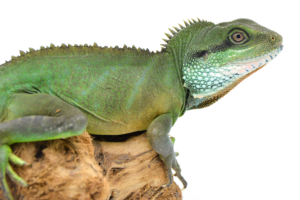 Lizards: Larger lizards include bearded dragons, blue tongue skinks, tegus, monitors, iguanas, and water dragons. These lizards are usually too large for Kritter Keepers. For tamer individuals, a regular cat carrier or small dog carrier made of plastic and wire is effective and safe. You can line the carrier with a towel for comfort and traction. However, for more feisty or nervous individuals, we recommend a solid-colored locking plastic storage container. This way, the owner will not be clawed or bit through the bars, and the animal will not be overly stressed by external stimuli. This can also be lined with a towel. Drill or melt holes through the plastic for ventilation.
Lizards: Larger lizards include bearded dragons, blue tongue skinks, tegus, monitors, iguanas, and water dragons. These lizards are usually too large for Kritter Keepers. For tamer individuals, a regular cat carrier or small dog carrier made of plastic and wire is effective and safe. You can line the carrier with a towel for comfort and traction. However, for more feisty or nervous individuals, we recommend a solid-colored locking plastic storage container. This way, the owner will not be clawed or bit through the bars, and the animal will not be overly stressed by external stimuli. This can also be lined with a towel. Drill or melt holes through the plastic for ventilation.
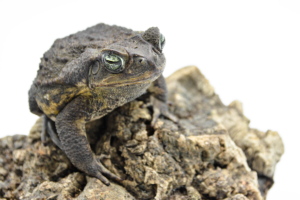 Amphibians: Amphibians will benefit from a moist transport enclosure of different levels depending on the species. Transporting through different temperatures and air spaces can dry out the air for amphibians so we recommend using several layers of damp paper towels. Make sure to always use dechlorinated water with your amphibians, including for transport. They will also benefit from some fake plants added to the enclosure to help them feel safer. Aquatic amphibians such as fire-bellied toads can be transported in a container of shallow water, not deeper than the individual is tall to account for water movement during transport. We like Kritter Keepers to transport most amphibians.
Amphibians: Amphibians will benefit from a moist transport enclosure of different levels depending on the species. Transporting through different temperatures and air spaces can dry out the air for amphibians so we recommend using several layers of damp paper towels. Make sure to always use dechlorinated water with your amphibians, including for transport. They will also benefit from some fake plants added to the enclosure to help them feel safer. Aquatic amphibians such as fire-bellied toads can be transported in a container of shallow water, not deeper than the individual is tall to account for water movement during transport. We like Kritter Keepers to transport most amphibians.
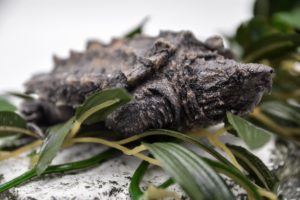 Turtles and Tortoises: Aquatic turtles can be transported in a Kritter Keeper or plastic storage container. We recommend misting down the turtle and enclosure prior to transport to provide some moisture, but do not fill the container with water. Use paper towels for small turtles or a towel for larger turtles. Terrestrial turtles and tortoises are best transported in a solid-sided plastic storage container with appropriate ventilation holes drilled. This decreases stress. A towel can be used to line the container, but if your tortoise is particularly active, filling it with a few inches of hay can be more effective to prevent them from pushing the towel completely to the side. Your tortoise should be able to stand up and turn around completely in the container. A cat carrier with a towel can work for smaller, calmer tortoises and for shorter trips. Some may try to climb out through the wire mesh, so use a solid-sided container if yours does this.
Turtles and Tortoises: Aquatic turtles can be transported in a Kritter Keeper or plastic storage container. We recommend misting down the turtle and enclosure prior to transport to provide some moisture, but do not fill the container with water. Use paper towels for small turtles or a towel for larger turtles. Terrestrial turtles and tortoises are best transported in a solid-sided plastic storage container with appropriate ventilation holes drilled. This decreases stress. A towel can be used to line the container, but if your tortoise is particularly active, filling it with a few inches of hay can be more effective to prevent them from pushing the towel completely to the side. Your tortoise should be able to stand up and turn around completely in the container. A cat carrier with a towel can work for smaller, calmer tortoises and for shorter trips. Some may try to climb out through the wire mesh, so use a solid-sided container if yours does this.
